Bathroom faucet ideas. Why quality matters
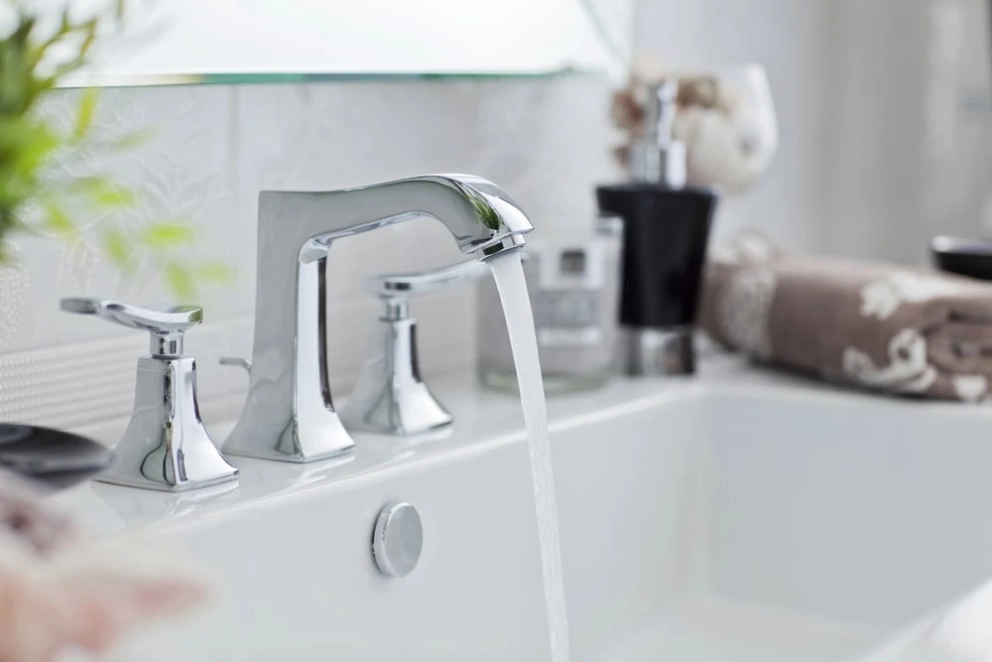
Choosing high-quality faucets for the bathroom makes all the difference! Think about it: You use those faucets every single day, multiple times, whether it’s for a quick hand wash or a luxurious bubble bath. Low-quality bathroom faucets might seem like a bargain upfront, but they often bring a truckload of headaches later. Say, for example, you install a shiny new faucet, and within weeks, it starts leaking. It's a hassle to fix, and the constant dripping turns into a symphony of annoyance, not to mention the spike in your water bill!
Plus, poor-quality bathroom faucets and sinks are the sneaky culprits behind rust, corrosion, and that annoying squeaky tap that sounds like a dying mouse. They tend to wear out faster, making you replace them sooner than you’d like, costing you more in the long run. Who wants to deal with a faucet that forces you to flinch in the shower, trying to balance the water temperature between scalding and freezing? Investing in top-notch faucets might feel like a splurge initially, but it saves you from the headache of constant repairs and the frustration of dealing with subpar performance when you just want a smooth, leak-free bathroom experience.
Don’t worry! This blog will give you an introduction to the best bathroom faucets you can find before you go out and buy one. We will walk you through the types of bathroom faucets and everything you need to know about their materials and finishes. Let’s dive right in!
Bathroom faucet types
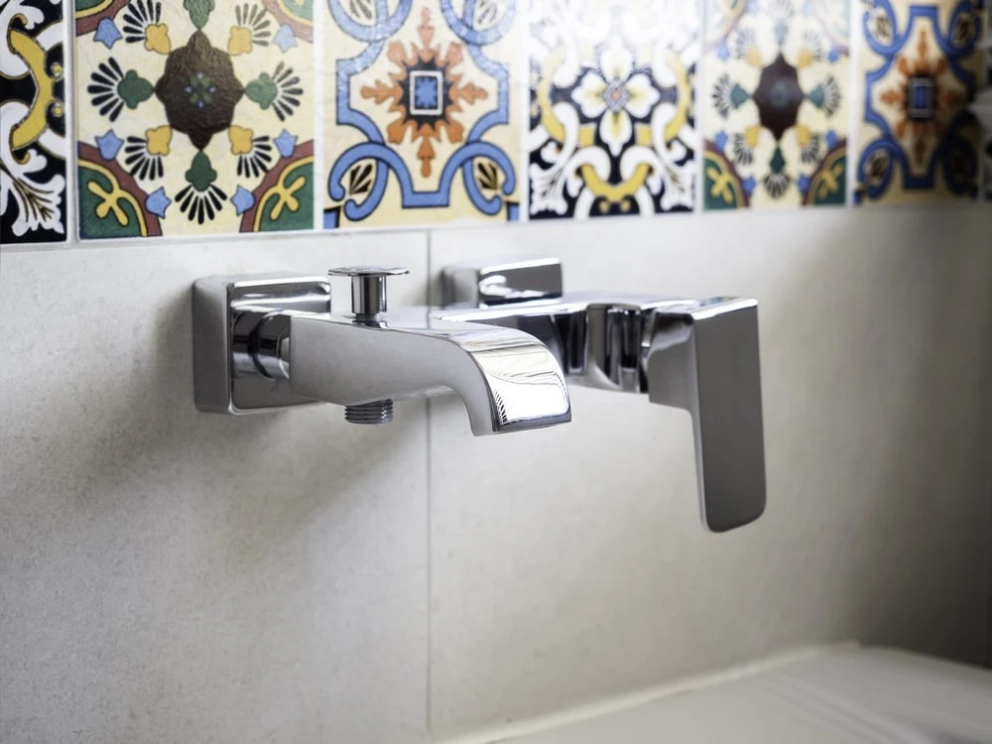
Did you know that there’s a diverse array of modern bathroom faucets, each serving specific purposes? Knowing these variations can be a game-changer when it comes to enhancing your bathroom’s functionality and style. Let’s delve into the three primary types of bathroom faucets and unravel their unique features and benefits.
Bathroom sink faucets
When it comes to your bathroom vanity with sink, the star of the show is undoubtedly the bathroom sink faucet. They come in various styles, from single-hole bathroom faucets that require only one hole for installation to elegant wall-mount bathroom sink faucets that free up countertop space. The single-hole bathroom faucet is a sleek, modern choice, while wall-mount bathroom sink faucet options lend a touch of sophistication.
Practical tip: Before buying bathroom vanity faucets, measure the number of holes in your bathroom vanity. Opt for a sink faucet bathroom that matches the existing configuration or consider purchasing a deck plate to cover any extra holes for a seamless look.
Bathroom shower faucets
For the ultimate shower experience, the right bathroom faucet shower is crucial. Wall-mounted bathroom faucets offer a clean, minimalist aesthetic, while their functionality and ease of use make them a popular choice. These wall-mounted faucets for the bathroom come in various designs, from sleek and contemporary to timeless and traditional, adding both style and convenience to your bathing space.
Practical tip: When installing a wall-mounted bathroom sink faucet for your shower, ensure proper placement to prevent water splashing outside the designated area. This will maintain a tidy and efficient bathing space.
Bathroom tub faucets
Completing the trifecta of bathroom faucet types are bathroom tub faucets. These fixtures come in diverse styles, including wall-mounted options that exude elegance and floor-mounted choices that make a statement. Whether you prefer a classic look or a modern touch, tub faucets offer functionality while complementing your bathroom's overall design.
Practical tip: For a cohesive look, coordinate your tub faucet with the other bathroom fixtures. Consider the finish and style to ensure a harmonious aesthetic throughout the space.
Parts of a bathroom faucet
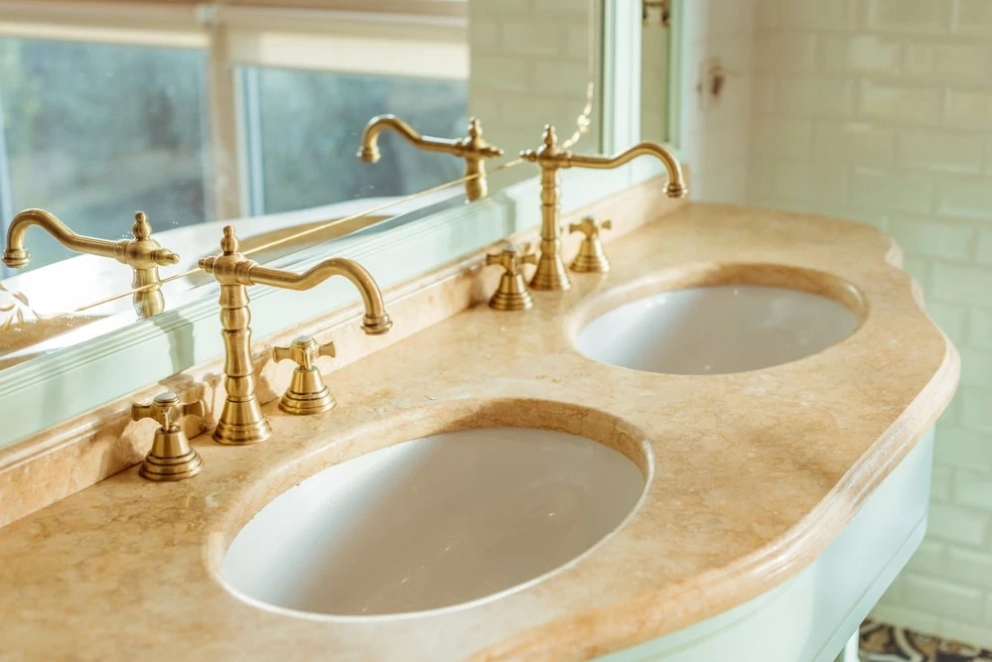
A typical bathroom faucet set comprises several essential parts that work together to control water flow, temperature, and manage the overall function of the fixture. Here are the primary components:
- Handle/knob. At its core, the one-hole faucet bathroom usually features a handle or knob, allowing users to easily turn the faucet on or off. This might be a single lever for streamlined control, or two handles for managing hot and cold water separately in a two-handle bathroom faucet, or 3 piece bathroom faucet.
- Spout. The bathroom sink faucet single hole also includes a spout from which water flows. It might vary in design, from a straightforward, single-piece spout to a more elaborate high-arc spout seen in some bathroom faucet sets.
- Aerator. A key part, often overlooked in a single-hole bathroom sink faucet, is the aerator, a small mesh screen found at the end of the spout in most bathroom faucet sets. This component regulates water flow by blending air into the stream, reducing splashes, and saving water.
- Cartridge/valve. Within the one-hole bathroom faucet body, the cartridge or valve acts as the control center, managing water temperature and flow. This element is pivotal in both single-hole bathroom sink faucets and multi-hole setups, ensuring smooth operation.
- Base/trim plate. Some faucets come with a base or trim plate that covers the holes in the sink or countertop for a neat and finished look. Not all faucets have this part, especially single-hole designs.
- Mounting hardware. The bathroom faucet sets often include mounting hardware, such as nuts and bolts, for secure installation. Some faucets also come with a base or trim plate, particularly useful for covering extra holes in the sink or countertop in a 3-hole bathroom faucet, providing a polished and tidy appearance. Understanding these various parts is valuable for maintenance and troubleshooting in any bathroom faucet configuration, whether it's a single-hole bathroom faucet or a more complex setup with multiple holes.
Bathroom faucet materials
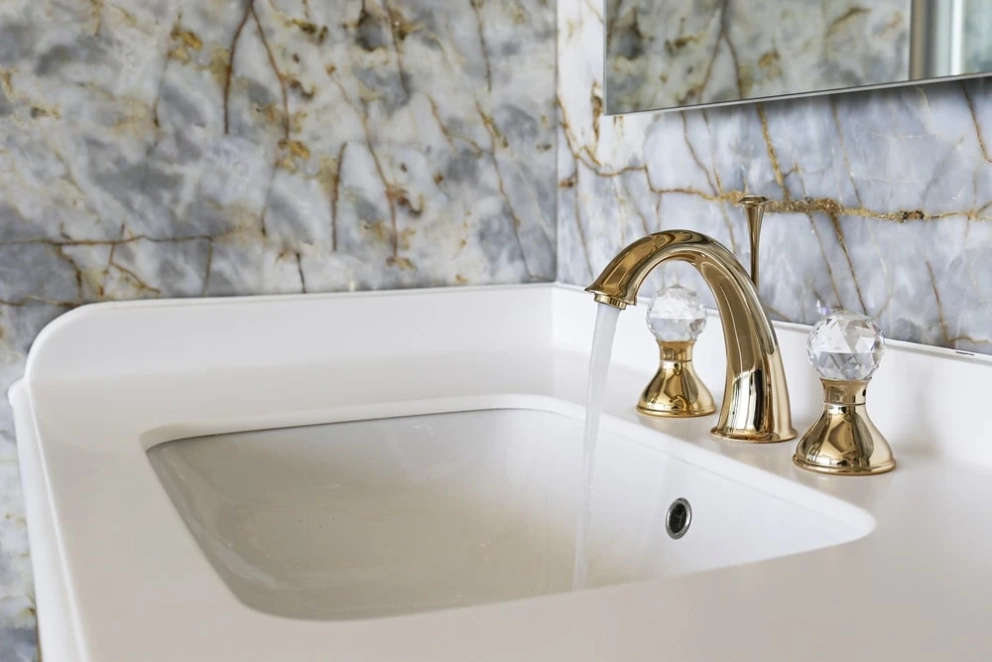
Bathroom faucets are made up of different types of materials. In this section, we’ll get to know the most popular bathroom faucet materials and dissect their features, advantages and disadvantages, and which material to choose depending on your bathroom design and preferences.
| Materials | Features | Practicality | Advantages | Disadvantages | When to use? |
| Stainless-steel bathroom faucet | Resistant to corrosion and rust, durable, easy to clean, modern appearance | Ideal for high-use bathrooms, low maintenance, long-lasting | Resistant to scratches, stains, and discoloration | Can be expensive and limited finish options | Best for contemporary or modern bathrooms, especially in high-moisture environments |
| Brass bathroom faucets | Excellent durability, resistant to corrosion, attractive appearance, available in various finishes | Sturdy and reliable, ages gracefully, versatile in design | Classic, elegant look, works with diverse decor styles | Requires occasional polishing to maintain lustre | Suitable for traditional, rustic, or vintage-themed bathrooms, offers timeless appeal |
| Bronze bathroom faucet | Rich, warm tones, durable, resists corrosion, develops a natural patina over time | Sturdy and resilient, adds character with an aging look, low-maintenance | Unique, antique appearance, hides fingerprints and water spots | The initial cost might be high and limited finish options | Perfect for adding a rustic or old-world charm, complements earthy or vintage aesthetics |
| Copper bathroom faucet | Distinctive reddish-brown hue, antimicrobial properties, durable, develops a natural patina | Strong and long-lasting, resists bacteria, adds warmth to space | Offers unique, artistic appeal, antimicrobial properties | Prone to developing a patina that may not suit all tastes | Best suited for eclectic or artistic designs, adds warmth to both modern and traditional bathrooms |
| Chrome bathroom faucet | Highly reflective, easy to clean, versatile, affordable, available in various styles | Low maintenance, durable, fits many decor themes | Sleek, modern appearance, resists scratches and tarnishing | May show water spots and fingerprints and can scratch with abrasive cleaners | Suitable for contemporary or minimalist bathrooms, offers a polished and reflective finish |
Choosing the right material for your bathroom faucet involves considering various factors. For a sleek, modern look in a high-moisture environment, a bathroom faucet stainless steel stands out with its durability and resistance to corrosion. A brass bathroom faucet, on the other hand, brings a classic touch and durability, making it suitable for traditional or vintage-themed spaces.
Bronze adds a rustic or antique vibe and ages beautifully, while a copper faucet bathroom offers a unique, artistic appeal and antimicrobial properties. Chrome, with its reflective surface, is perfect for contemporary bathrooms but may require more maintenance to keep its shine.
Consider the existing decor style, desired aesthetic, maintenance preferences, and budget when selecting the ideal material for your bathroom faucet. Each material has its distinctive advantages and drawbacks, so weighing these against your specific needs will guide you toward the perfect choice for your space.
Faucet finishing styles

You've spent hours designing your dream bathroom, and when it comes to choosing the modern faucet bathroom finishes, you’re stumped. It’s a common homeowner woe - the struggle to pick the perfect faucet finish that complements your space without overwhelming it. Well, that’s the reason why we’re diving deep into the world of faucet bathroom finishing styles, shedding light on various options and practical tips to alleviate your decision-making woes.
- Black bathroom faucet. Enter the allure of the black faucet bathroom - a trendsetter in modern design. In Canada, black matte bathroom faucets are stealing the spotlight. They exude sophistication and complement contemporary bathrooms flawlessly. Their sleek, matte finish conceals fingerprints and water spots, maintaining a clean look with minimal upkeep. Pair a bathroom black faucet with lighter surroundings for a striking contrast that enhances the overall aesthetic.
- White bathroom faucet. The pristine elegance of a white faucet bathroom brings a sense of purity and simplicity to your space. Its versatility allows it to seamlessly blend with various bathroom styles, offering a clean and refreshing look. A white faucet adds a touch of modernity while maintaining a sense of timelessness. Consider a white faucet for minimalist or Scandinavian-inspired bathrooms to create a serene ambiance.
- Gold bathroom faucet. In Canada, gold bathroom faucets, especially brushed gold variants, are making a dazzling statement. They exude luxury and opulence, elevating the bathroom's ambiance. Brushed gold finishes offer a subtler, more refined appearance compared to shiny gold, making them versatile in modern settings. Use luxury gold faucets bathroom as accent pieces in bathrooms with neutral tones for a lavish yet balanced look.
- Brushed & polished nickel bathroom faucets. Brushed nickel bathroom faucets deliver a muted, warm tone that resists fingerprints and water spots, perfect for maintaining a clean appearance in high-traffic bathrooms. Conversely, polished nickel faucets offer a glossy, reflective finish that adds a touch of glamour and sophistication to the space. Consider brushed nickel for a more casual, contemporary vibe, while polished nickel brings a touch of elegance to traditional or vintage-themed bathrooms.
- Vintage-style faucets. Vintage style evokes a nostalgic charm, reminiscent of bygone eras. These faucets often feature ornate details, cross handles, and antique finishes like oil-rubbed bronze, and polished nickel. They lend character and authenticity to vintage or farmhouse-inspired bathrooms. Choose vintage faucets to create a focal point and anchor the design in historically themed spaces.
Understanding these finishes and their practical applications empowers homeowners to make informed choices that align with their design preferences and functional needs. Consider the existing decor, desired ambiance, maintenance requirements, and personal style to select the ideal faucet finish that transforms your bathroom into a modern sanctuary.
Modern bathroom faucet styles
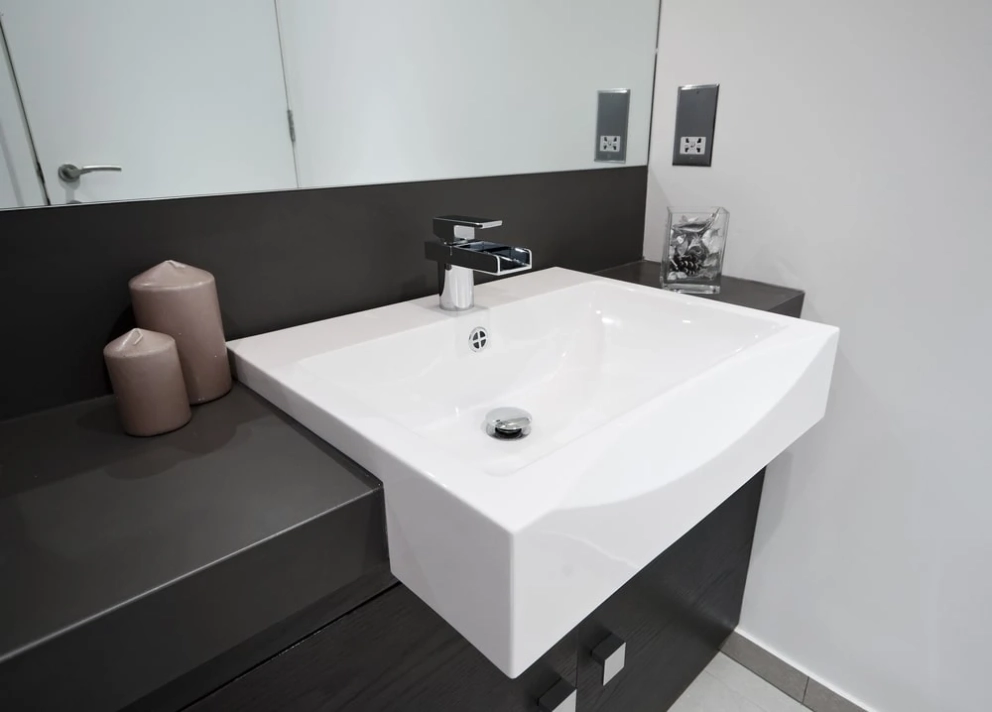
Modern faucets for the bathroom offer a spectrum of styles, each with its unique charm and practical advantages. Let's explore these faucet bathroom styles in-depth, offering insights and practical tips to simplify your decision-making process.
- Bathroom faucet waterfall. The waterfall bathroom faucet combines elegance with functionality. It creates a gentle cascade of water, adding a serene and spa-like ambiance to your bathroom. Pair a waterfall faucet with a vessel sink to enhance the visual impact and create a striking focal point in your space.
- Single-handle bathroom faucet. Efficiency meets sleek design in the single-faucet bathroom. It allows easy control of water flow and temperature with a single lever, perfect for streamlined functionality. Opt for a single bathroom faucet in smaller bathrooms or powder rooms to maximize countertop space.
- 2-handle bathroom faucet. Classic and versatile, the bathroom faucet 2-handle offers separate handles for hot and cold water control. This type of faucet is also known as a widespread bathroom faucet. It adds a timeless charm to your bathroom while allowing precise temperature adjustments. Choose a two-handle faucet for larger bathrooms or those with a more traditional design for a balanced look. If you want an edgy spa-like bathroom, opt for a minimalist bathroom faucet widespread.
- Touchless bathroom faucet. Embracing technology, the touchless faucet operates with motion sensors, offering convenience and hygiene. It minimizes germ transfer and conserves water by automatically shutting off. Ideal for high-traffic bathrooms or households with children, the touchless feature reduces the risk of spreading germs.
- Pull-out bathroom faucet. Versatile and practical, the pull-out faucet features a spray wand that extends, allowing flexibility for various tasks like rinsing the sink or filling containers. Perfect for multitaskers, the pull-out faucet simplifies daily chores and offers enhanced functionality.
- Bathroom vessel sink faucet. Designed specifically for vessel sinks, bathroom faucets for vessel sinks boast an elevated height to accommodate the sink's bowl-like structure. A vessel sink bathroom faucet offers a striking visual appeal and ample clearance for washing hands. Consider the spout height and reach when choosing a vessel sink faucet to ensure compatibility with your sink.
- Tall bathroom faucet. Tall faucets, often referred to as high-arc faucets, bring a sense of grandeur and sophistication to the bathroom. They offer ample space beneath the spout for washing hands or filling large vessels. Practical Tip: Pair a tall faucet with a deeper sink to prevent splashing and ensure functionality.
Signs it is time to change the bathroom faucet
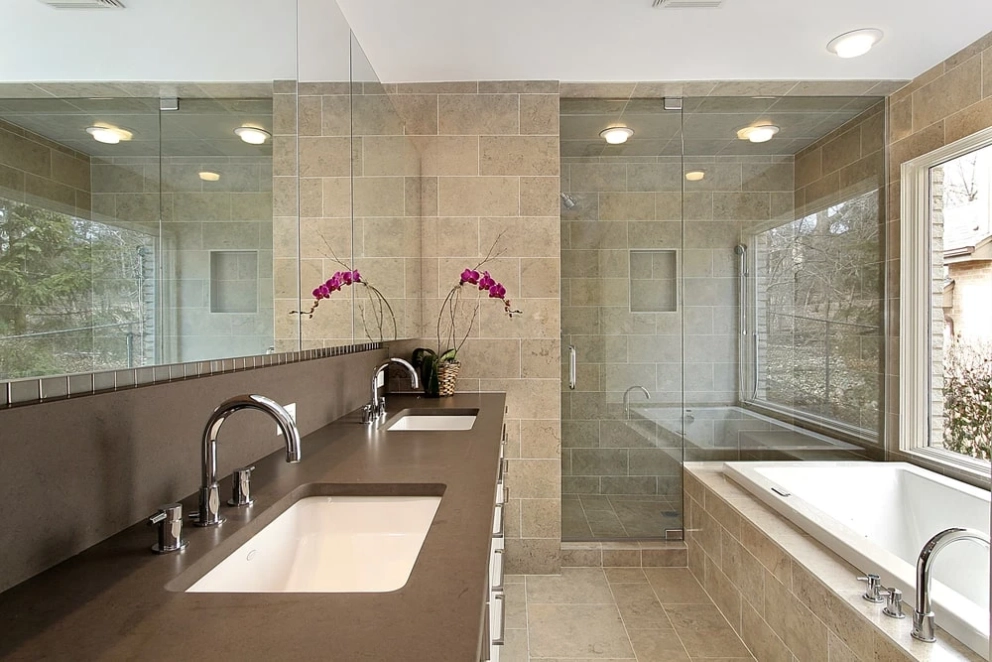
When it comes to the functionality of your bathroom, the faucet plays a pivotal role. Recognizing the signs indicating it's time to consider a bathroom faucet replacement can save you from potential water wastage, higher bills, and ongoing frustration. Here's a guide to understanding when to replace a bathroom faucet and when it requires attention and perhaps a professional's expertise:
- Dripping bathroom faucet. The most common and easily identifiable sign is persistent dripping. The steady 'drip, drip, drip' not only becomes an auditory annoyance but also signifies a potential issue demanding resolution. Likewise, the presence of a leaking bathroom faucet, evidenced by water accumulation in the sink, isn't just an inconvenience but a clear indication of an underlying problem.
- Leaking bathroom faucet. If your bathroom faucet is leaking, it's not just the annoying sound you have to worry about. There's probably a small pool of water building up in your sink, too. Your bathroom isn't trying to become a swimming pool - this needs fixing. Sometimes, you can sort a leaky bathroom faucet with a simple repair if it's a small problem, but when the leaks won't stop, it's time to admit you might need some expert help.
- Dated or worn-out appearance. Additionally, beyond functionality, aesthetics also matter. An aging faucet that appears dated or worn out could benefit from a replacement, not only revitalizing the bathroom's appearance but also enhancing its overall appeal.
Recognizing signs such as persistent dripping, ongoing leaks, or an outdated appearance should prompt consideration for a bathroom faucet repair or replacement. Addressing these issues in a timely manner can prevent further water wastage and potential damage while ensuring the efficient operation of your bathroom fixtures.
If you've given fixing the faucet a shot and it's still not cooperating, it could be a good moment to get help from the experts - a plumber. Sometimes, changing a bathroom sink faucet isn't a DIY-friendly task. And you know what? That's totally okay! It's alright to ask for help when a tricky faucet refuses to budge.

